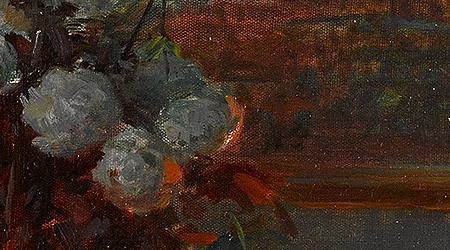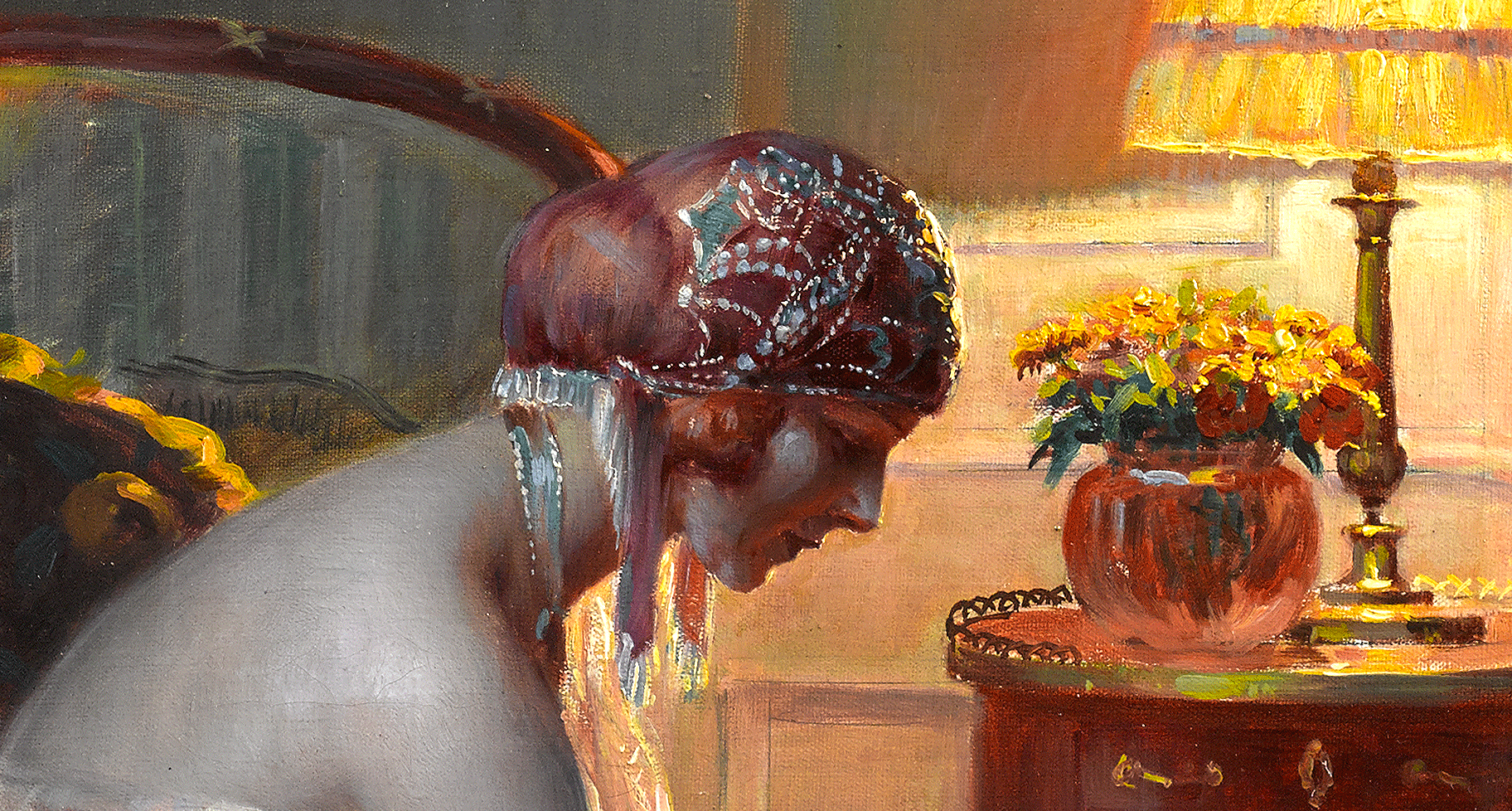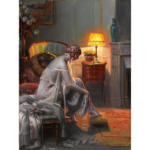A graceful, long-limbed woman, dressed in the most fashionable styles of the time, returns from the evening’s entertainment. Her elegant demeanour is reflected in the accoutrements of her costume—the bejewelled flapper hat, her diaphanous silk dress, the narrow curve of her high-heel — and amplified by the tasteful surroundings in which she relaxes, from the luxurious rug beneath her feet to the Bourbon style mahogany cabinet and the jade vase perched atop the mantelpiece. Caught in the intimate surroundings of her bedroom, and bathed in the soft, warm glow of a standing lamp, she embodies a soft, sensuous ideal of femininity.
The scene captures the decadent, luxurious ambiance of high society during the Belle Epoque in France. The model’s posture, reaching down to an arched ankle, her dress slipping off her shoulder, invests the tableau with a subtle but unmistakable erotic thrill. A fine example of the intimate, opulent style of painting for which Enjolras was best known during his lifetime, this work of art casts the viewer back in time to the era of the aesthete and a flamboyant, aristocratic style of living.
Born in Coucouron, in the Ardèche region of Southeastern France, Enjolras went on to study in Paris at the École des Beaux-Arts under Jean-Léon Gérôme, one of the key exponents of the Academic style that would dominate the mainstream of European art in the late XIX and early XX centuries, and against which radical movements such as Impressionism and Fauvism opposed themselves. Among his peers at the Beaux-Arts was Pascal Dagnan-Bouveret, who became a leading figure in the naturalist school of painting, and Gustave-Claude-Étienne Courtois. He later entered the École de Dessin, where he studied under Gaston Gérard.
Academicism, named for the fact that it was the mode taught at the registered academies, was by the time that Enjolras came to artistic maturity the most popular style in France. Exhibitions such as the Paris Salon and the Salon d’Automne attracted hundreds of thousands of visitors in the course of their two-month runs, during which paintings were hung grid-like on the venue’s walls. Enjolras, a regular exhibitor at the Salon of the Societaire des Artistes Français (to which he was elected a member in 1901), worked in Paris and in the South of France, painting portraits, nudes and interiors in oil, watercolour and pastel. He also created a series of fine landscapes, the most notable of which can be found in the museums of Puy and Calvet d’Avignon.













